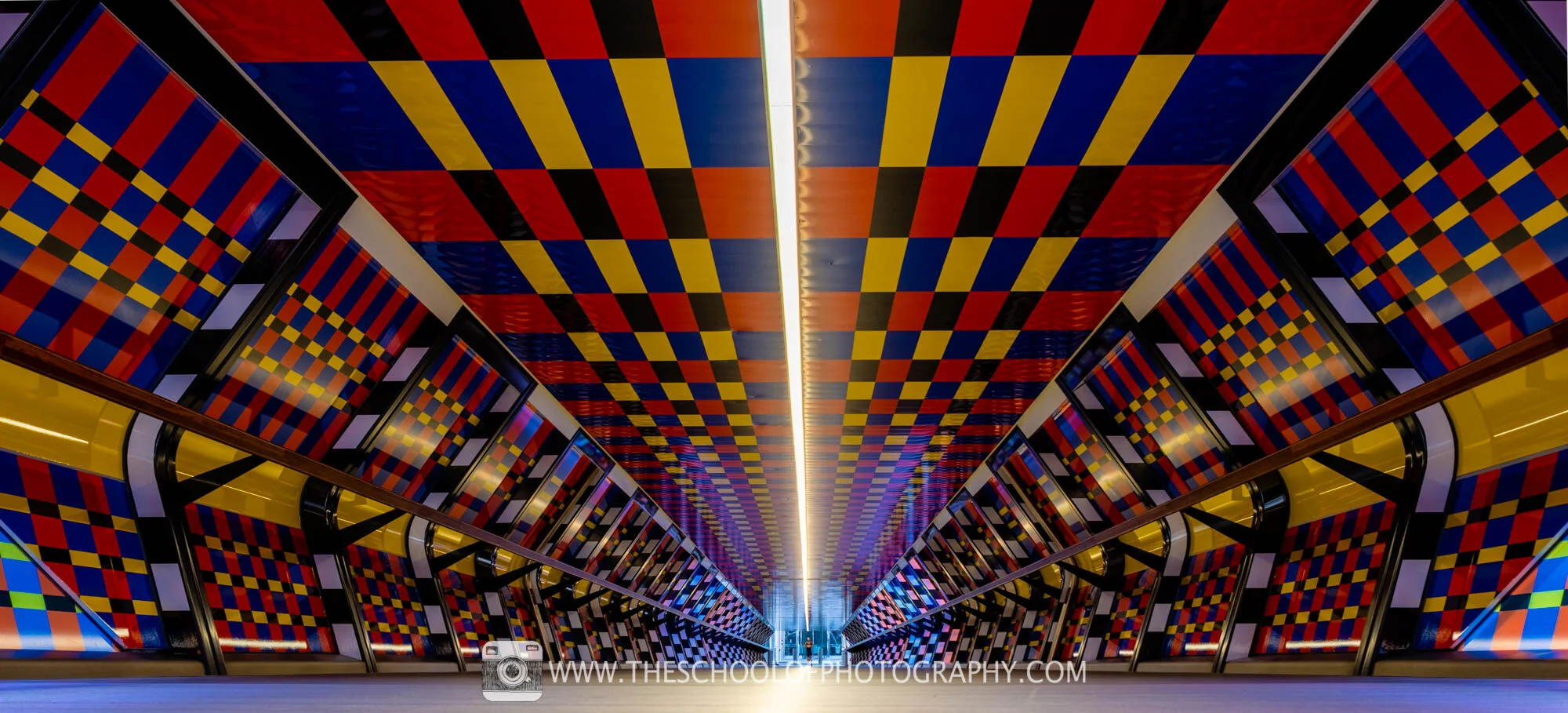Symmetry refers to any reflections across the image. You can also achieve amazing results by exploring interesting ways to show symmetry in your subjects or finding a break in the symmetry.

How To Use Symmetry In Photography With Examples
In one the trees are perfectly centered in the photo.

. Pattern and Repetition Instinctively humans are instinctively interested in patterns or patterns that are harmonious. Self-portraiture is a fantastic way to get better at finding good compositions without always being behind the camera. The key to emphasizing patterns is to isolate them from their surroundings.
Now lets see how we can use these four types of symmetry in photography. You may have often heard of the term symmetry in day to day life. Symmetrical photographs may also leave empty space in the center and place two symmetrical subjects of interest on either side of the photograph.
A photographer will use asymmetry lack of symmetry or unevenness to create visual interest tension and movement. Think of your own body for a start says the guy with the slightly asymmetrical face. In other words if you cut the photo in half the left and right side mirror each other.
Merriam-Webster offers this as the first definition of symmetry. This is also known as formal balance or symmetrical balance. The kind of symmetry that were most accustomed to is Reflection.
Or the upper and bottom half are imitating each other. This post is part of our Rules of Composition in Photography series. One side is not overly cluttered compared to the other.
Asymmetrical forms lack the balance of symmetrical forms although you can asymmetrically balance an entire composition. The property of being symmetrical especially. Symmetry is the quality of an object to be split apart into two different parts by an axis with both parts being identical.
Symmetry is directly linked to balance and strength. It exists in patterns. When an image looks identical to the original image after the shape is being turned or flipped then it is called symmetry.
Having strong composition and points of interest will help symmetry. Consider that as a composition technique in photography you do not need exact symmetry in order to achieve noticable effects. However this symmetry doesnt have to be literal in the sense of one half of an image exactly mirroring the other.
If everything is symmetrical it is balanced and lacks movement. Patterns both natural and man-made bring a sense of visual rhythm and harmony to photographs that like a series of repeating notes in a melody capture the imagination. Asymmetry is the opposite of symmetry which often places the subject of interest in the center.
The composition is symmetrical and lacks interest. Along with reflection the four kinds of symmetry that we most commonly deal with are. What is symmetry in photography.
Symmetry in photography is often associated with non-living objects like buildings. For example the left and right half of a composition could mirror each other while the top and bottom also mirror each other. If we are very strict symmetry means that the two sides should be 100 identical.
Therefore it seems logical that we might also find symmetrical photos beautiful. But it can also include people. This can involve real reflections such as a subject looking in a mirror or a subject reflected on water.
In asymmetrical photography these rules are inverted or even occasionally subverted. Symmetry definition the correspondence in size form and arrangement of parts on opposite sides of a plane line or point. The mind is pleased by natural order and the circular patterns found in splashes of water the human iris and flower petals star.
Examples Imagine two photos of an apple orchard. Keeping your subject symmetrical is another good technique to use in photography. Both sides of the image carry the same weight meaning the composition is evenly distributed.
The definition of symmetry in photography is a visual balance between two halves of an image. Correspondence in size shape and relative position of parts on opposite sides of a dividing line or median plane or about a center or axis compare bilateral symmetry radial symmetry. Symmetry is a strong device that allows you to mechanically create concord and a way of aesthetically pleasing balance and proportion in a photograph.
Symmetrical This photo composition places the object and divides the photo area equally right and left to look remarkably symmetrical. To make the process easier make sure you use a sturdy tripod and a remote. Beauty of form arising from balanced proportions.
Symmetry Photography - Definition - Online Encyclopedia Symmetry The symmetry can even occur over multiple axes at the same time. Patterns appear whenever strong graphic elementslines colors shapes or formsrepeat. How you can use Symmetry.
It can also involve illusory reflections such as when you photograph an animal that has identical left and right sides. Symmetry in photography composition is achieved when two halves of an image hold the same weight. The creation of an image in which both sides either horizontal or vertical should look the same.
The GOLDEN SPIRAL in Photography 3. Symmetry Math definition states that symmetry is a mirror image. Balanced proportions also.
Radial symmetry is the third most common form of symmetry we encounter in photography. Snowflakes show reflection symmetry over more than two axes. Regularity of form or arrangement in terms of like reciprocal or corresponding parts.
This definition is more of a mathematical definition. Each eye is more capable of perceiving detail below our line of sight than above and their peripheral vision is also much more sensitive in directions away from the nose than towards it. Capturing elements in which there are repeating shapes lines or colors.
Relying on how youre holding the digital camera and the way a lot of a scene you select to point out you may strengthen or weaken the symmetric properties of an object or scene. A photograph is symmetrical if it has two almost identical sides with a central point of axis. Beauty of form arising from balanced proportions Research bears out that all cultures find people with more symmetrical faces more beautiful.
A rigid motion of a geometric figure. Symmetry Photography Composition.

Symmetry And Patterns Photography Composition Rules

What Is Symmetry In Photography How To Really Use It

Why Is Symmetry So Satisfying Alk3r

Symmetry In Photography Killer Tips To Improve Composition The School Of Photography Courses Tutorials Books

7 Great Tips To Use Symmetry In Photography
Composition 101 Symmetry Photolisticlife

Five Kinds Of Photography Balance You Need To Understand To Take Appealing Photographs Student Resources

Symmetry In Photography Killer Tips To Improve Composition The School Of Photography Courses Tutorials Books
0 comments
Post a Comment